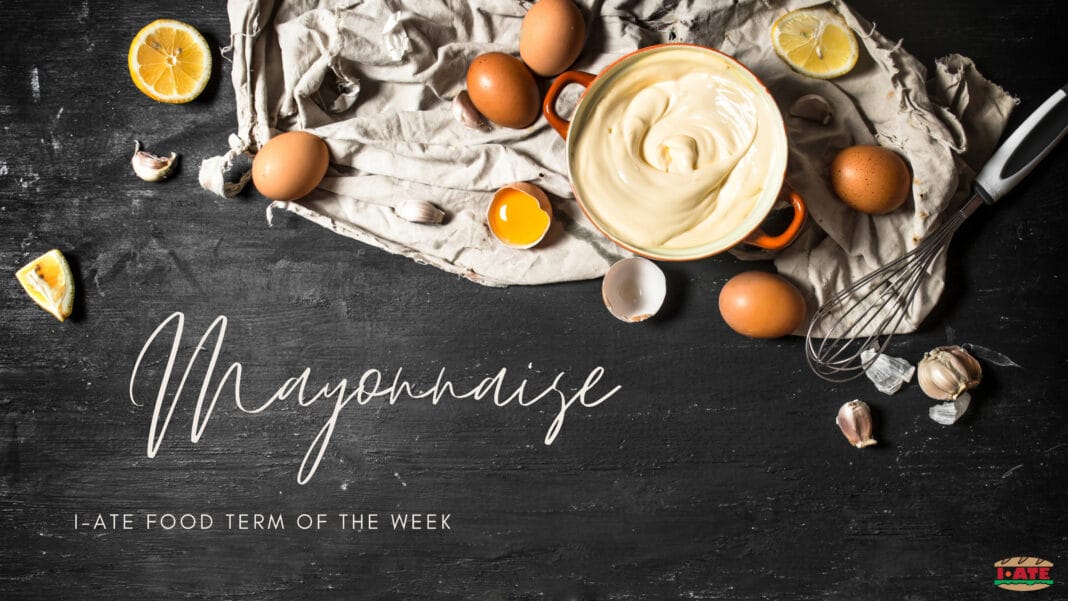Ketchup’s eternal rival: adored by some and despised by others. As its “darker” twin, mayonnaise goes perfectly with French fries, sandwiches and burgers, but is also a great base for other tasteful condiments, such as tartar and cocktail sauces.
This thick creamy sauce, generally white- or pale-yellow-hued, is an emulsion of oil, egg yolks and an acid component, either vinegar or lemon juice (sometimes even both). It can be made by hand with a whisk or a fork, or with the aid of an electric mixer or blender. Lecithin and protein from the yolk act as emulsifiers, stabilising a mixture of two liquids – oil and water in the yolk itself – which otherwise could not be combined.
A Historical Overview
Due to its particular taste and texture, mayo is today often cause of debates at dinner tables. However, the interesting thing to know that this popular sauce is not new to disagreements! Culinary experts and historians have been arguing for centuries about its actual birthplace and name.
Theories and legends on the subject seem to be countless, but the most widespread version holds that the condiment was born in 1756, when French forces under the command of Duke de Richelieu, grandnephew of Cardinal Richelieu, captured the city of Mahon, on the Mediterranean island of Menorca, in the first European battle of the Seven Years’ War. A victory banquet was held and the Duke’s chef, lacking the cream used in all traditional preparations of the time, decided to try a recipe he had learnt on the island, mixing eggs and oil. It appears in fact that an emulsified sauce similar to today’s mayonnaise but containing garlic, was already popular in the 18th in different regions of Spain with the name of aoli bo. The new dressing was so successful it was named “mahonnaise”, in honour of its place of birth.
However, some years later, the French gourmet Grimod de La Reynière rejected this version of the story claiming that the city of Mahon was “not known for good food” and maintaining that the original name of the sauce was actually “bayonnaise”, after the French city of Bayonne, well known in Europe for its ham production.
Other supporters of the “French cause” were food experts and authors Marie-Antoine Carême and Prosper Montagné, the former suggesting that the name of the sauce was derived from the French verb manier (meaning to stir or to blend) and thus preferring the spelling “magnonnaise”; the latter claiming its origin actually lay in the Old French Old French word moyeu, meaning egg yolk.
Regardless of its origin and etymology, mayonnaise quickly spread in European cuisine and subsequently made its way to the United States.
Its popularity reached its peak when industrial manufacturers began producing commercial mayonnaise to be sold in jars. The first to have this idea was a German immigrant named Richard Hellmann, who opened a delicatessen in New York in the early 1900s. The salads his wife made using her homemade mayonnaise were so appreciated that customers started to ask if they could buy the sauce itself. The Hellmann then began selling their mayo in “wooden boats” used for weighing butter. Ever since, mayonnaise had its triumphant march through world’s cuisines.
References
Slate. A brief history of mayonnaise. 2013. [ONLINE]. Available at: https://slate.com/culture/2013/12/mayonnaise-history-was-it-invented-by-the-french-or-the-spanish.html [Accessed on 10/11/2020]
The Nibble. The history of mayonnaise. [ONLINE]. Available at: https://www.thenibble.com/reviews/main/cheese/eggs/mayonnaise-history.asp [Accessed on 10/11/2020]
Club Sandwich. La mayonnaise, une histoire controversée. 2018 [ONLINE]. Available at: http://www.club-sandwich.net/articles/la-mayonnaise-une-histoire-controversee-135.php [Accessed on 11/11/2020]
España Gastronomía. La mahonesa: origen de la estrella de las salsas. 2017. [ONLINE]. Available at: https://espana.gastronomia.com/noticia/7445/la-mahonesa-origen-de-la-estrella-de-las-salsas [Accessed on 11/11/2020]
 Written by Irene Zanardi, Schuman Trainee at the Euramis Pre-Translation Unit. She holds a Bachelor’s in Intercultural Linguistic Mediation and a Master’s in Specialised Translation and Terminology.
Written by Irene Zanardi, Schuman Trainee at the Euramis Pre-Translation Unit. She holds a Bachelor’s in Intercultural Linguistic Mediation and a Master’s in Specialised Translation and Terminology.

